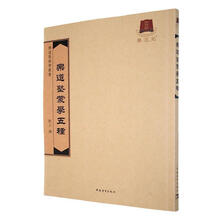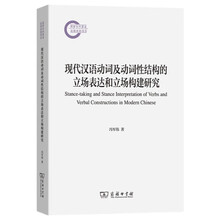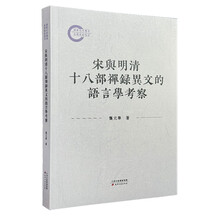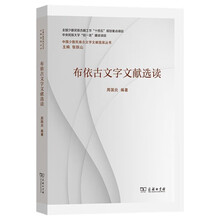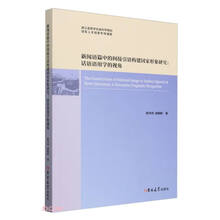1 生成:范畴之间的逻辑演绎
(Generation: Inter-Categorical Logic Deduction)
1.1 范畴(Categories)
1.2 次范畴化(Subcategorization)
1.3 短语结构:范畴关系的层级呈现(Phrase Structure: A Hierarchical
Representation of the Categorical Relationship)
1.4 本章简评
2 X-杠理论:短语结构的一次升华
(X-Bar Theory: A Revised Version of Phrase Structure)
2.1 投射原则(Projection Principle)
2.2 X-杠理论(X-Bar Theory)
2.3 附接与X-杠结构(Adjunction and X-Bar Structure)
2.4 S的X-杠结构(X-Bar Structure of S)
2.5 X-杠框架下对结构的进一步探索(X-Bar Structure: Further Discussion)
2.6 本章简评
3 管辖(Government)
3.1 c-指令与管辖(c-command and Government)
3.2 格的指派(Assignment of Cases)
3.3 本章简评
4 约束(Binding)
4.1 约束关系(Binding Relation)
4.2 照应语和代词(Anaphors and Pronouns)
4.3 R-表达式(R-expression)
4.4 本章简评
5 转换:从底层到表层的映射
(Transformations: Mapping from DS to SS)
5.1 转换的性质(The Nature of Transformations)
5.2 Wh-移位(Wh-movement)
5.3 NP-移位(NP-movement)
5.4 外置与重型NP后置(Extraposition and Heavy NP Shift)
5.5 词缀跳跃(Affix-hopping: Main Verbs)
5.6 Do-支撑(Do-support: Negative Sentences)
5.7 助动词的提升移位(Raising of Auxiliary Verbs)
5.8 DP结构内中心语移位(Head-movement in DPs)
5.9 本章简评
6 θ-理论(θ-Theory)
6.1 c-选择与s-选择(c-selection and s-selection)
6.2 论元、准论元、算子(Arguments, Quasi-arguments and Operators)
6.3 论元结构表征式(The Representation of Argument Structures)
6.4 θ-标准(θ-Criterion)
6.5 本章简评
7 格理论(Case Theory)
7.1 格过滤(Case Filter)
7.2 可见性假说(Visibility Hypothesis)
7.3 结构格与内在格(Structural versus Inherent Case)
7.4 汉语的格指派问题(Assignment of Cases in Mandarin Chinese)
7.5 例外格标记(Exceptional Case Marking)
7.6 本章简评
8 格理论与θ-理论的互动与交织
(Interaction and Interweaving between θ-Theory and Case theory)
8.1 格与移位(Case and Movement)
8.2 VP内主语假说(Subject-inside-VP Hypothesis)
8.3 移位:θ-角色与格指派(Movement: the Assignment of θ-roles and Cases)
8.4 本章简评
9 空范畴(Empty Categories)
9.1 空范畴的种类(Types of Empty Categories)
9.2 PRO与控制(PRO and Control)
9.3 本章简评
10 界限理论:对于移位α的初步探讨
(Bounding Theory: A First Discussion on Move α)
10.1 移位α(Move α)
10.2 界限理论:毗邻(Bounding Theory: Subjacency)
10.3 恰当管辖(Proper Government)
10.4 本章简评
11 语阻:对于移位α的进一步探讨
(Barriers: Further Discussion on Move α)
11.1 语迹与ECP(Traces and ECP)
11.2 语阻构架(Barriers Framework)
11.3 相关最小限度条件(Relativised Minimality)
11.4 本章简评
12 中心语参数(Head Parameter)
12.1 OV语序(Object Verb)
12.2 动词位二(Verb Second)
12.3 本章简评
13 代词脱落语中的pro(pro in pro-drop Languages)
13.1 零主语(Null Subjects)
13.2 零宾语(Null Objects)
13.3 本章简评
14 VSO型语言(VSO Languages)
14.1 动词提升到C(Verb-raising to C)
14.2 主语在VP内(Subject inside VP)
14.3 本章简评
15 融合现象(Incorporation Phenomena)
15.1 融合理论(Incorporation Theory)
15.2 动词融合(Verb Incorporation)
15.3 介词融合(Preposition Incorporation)
15.4 本章简评
16 附着(Clitics and Cliticisation)
16.1 法语中的附着词(Clitics in French)
16.2 带有附着形式的语言分类(Types of Clitic Languages)
16.3 附着的本质(Nature of Clitic and Cliticisation)
16.4 本章简评
17 INFL分解假设(Split INFL Hypothesis)
17.1 强势Agr VS弱势Agr(Strong versus Weak Agrs)
17.2 Neg-短语(Neg Phrase)
17.3 AgrS、AgrO与结构格(AgrS、AgrO and Structural Case)
17.4 宾语转换(Object Shift)
17.5 本章简评
18 CP分裂假说(Split CP Hypothesis)
18.1 CP分裂假说的提出(The Proposal of Split CP Hypothesis)
18.2 话题短语和焦点短语(Topi
展开

